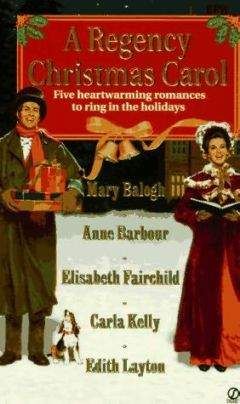1
Приведенные даты расселения Homo sapiens – не более чем правдоподобные предположения; точная временная шкала служит предметом дискуссий. – Здесь и далее, если не указано иное, примеч. автора.
Археологические данные свидетельствуют, что современные люди мигрировали в Евразию несколько раз в период от 180 000 до 75 000 лет назад, но первые путешественники не смогли закрепиться на этих территориях. См.: Serena Tucci and Joshua M. Akey (2017). Population genetics: a map of human wanderlust // Nature 538. Р. 179, 180; Chris Stringer and Julia Galway-Witham (2018). When did modern humans leave Africa? // Science. 359 (6374). Р. 389, 390.
Изучение немногих современных обществ охотников и собирателей подтверждает преимущества от формирования связей за пределами основной семейной группы, то есть с неродственниками: это способствует распространению технологических новинок, социальных норм и знаний о природных ресурсах. См.: A. B. Migliano et al. (2017). Characterization of hunter-gatherer networks and implications for cumulative culture // Nature Human Behaviour. 1: 0043.
Более подробно об эволюции «социального мозга» см.: John Gowlett, Clive Gamble and Robin Dunbar (2012). Human evolution and the archaeology of the social brain // Current Anthropology. 53 (6). Р. 693–722.
J. Feblot-Augustin (1999). La mobilité des groupes paléolithiques // Bulletins et Mémoires de la Société d’anthropologie de Paris. 11 (3). Р. 219–260.
Чтобы получить представление о ее работе, см.: Ariane Burke (2012). Spatial abilities, cognition and the pattern of Neanderthal and modern human dispersals // Quaternary International. 247. Р. 230–235.
Kim Hill and A. Magdalena Hurtado. Ache Life History: The ecology and demography of a foraging people. Aldine de Gruyter, 1996; Louis Liebenberg. The Origin of Science: The evolutionary roots of scientific reasoning and its implications for citizen science. Cybertracker, 2013.
Неспособность найти дорогу домой остается одной из главных причин смертности у современных охотников и собирателей, таких как аче, хиви и цимане в лесах Южной Америки и кунг в пустыне Калахари. См.: Benjamin C. Trumble (2016). No sex or age difference in dead-reckoning ability among Tsimane forager-horticulturalists // Human Nature. 27. Р. 51–67.
Thomas Wynn, Karenleigh A. Overmann, Frederick L. Coolidge and Klint Janulis (2017). Bootstrapping Ordinal Thinking // Thomas Wynn and Frederick L. Coolidge, eds. Cognitive Models in Palaeolithic Archaeology. OUP, 2017. Ch. 9.
Richard Irving Dodge. Our wild Indians: thirty-three years’ personal experience among the red men of the great West. A popular account of their social life, religion, habits, traits, customs, exploits, etc. With thrilling adventures and experiences on the great plains and in the mountains of our wide frontier. A. D. Worthington, 1882. Ch. XLIII.
Harold Gatty. Finding Your Way Without Map or Compass. Dover, 1999. Р. 51, 52.
Приблизительно 100 г. до н. э.
См.: Margaret Gelling and Ann Cole. The Landscape of Place-Names. Shaun Tyas, 2000.
Michael Witzel (2006). Early loan words in western Central Asia // Victor H. Mair, ed. Contact and Exchange in the Ancient World. University of Hawaii Press, 2006. Ch. 6.
Robert Macfarlane. Landmarks. Hamish Hamilton, 2015. Р. 19, 20.
G. F. Lyon. The Private Journal of Captain G. G. Lyon, of H. M. S. Hecla, during the Recent Voyage of Discovery under Captain Parry. John Murray, 1824. Р. 343, 344.
Ludger Müller-Wille. Gazetteer of Inuit Place Names in Nunavik. Avataq Cultural Institute, 1987.
Иннуитские названия взяты из нескольких источников, но главным образом из материалов Фонда наследия иннуитов. http://ihti.ca/eng/placenames/pn-index.html
Этот рассказ впервые встречается в докторской диссертации Апорты: Old Routes, New Trails: Contemporary Inuit travel and orienting in Igloolik, Nunavut // University of Alberta, 2003, ch. 5.
С атласом троп иннуитов можно также познакомиться на http://paninuittrails.org/index.html
Claudio Aporta (2009). The trail as home: Inuit and their pan-Arctic network of routes // Human Ecology. 37. Р. 131–146. Р. 144.
John MacDonald. The Arctic Sky: Inuit astronomy, star lore, and legend. Royal Ontario Museum / Nunavut Research Institute, 2000. Р. 163.
Claudio Aporta (2016). Markers in space and time: reflections on the nature of place names as events in the Inuit approach to the territory // William Lovis and Robert Whallon, eds. Marking the Land: Hunter-gatherer creation of meaning in their environment. Routledge, 2016. Ch. 4.
В настоящее время на алеутском языке говорят лишь несколько десятков жителей островов.
Richard Henry Geoghegan. The Aleut Language. United States Department of Interior, 1944, via Kevin Lynch. The Image of the City. MIT Press, 1960.
Информация, собранная Изабель Келли, взята из ее записок и отредактирована Кэтрин Фоулер из Университета Невады. См.: Catherine S. Fowler (2010). What’s in a name: Southern Paiute place names as keys to landscape perception // in Leslie Main Johnson and Eugene S. Hunn, Landscape Ethnoecology: Concepts of biotic and physical space. Berghahn, 2010. Ch. 11; Catherine S. Fowler (2002). What’s in a name? Some Southern Paiute names for Mojave Desert springs as keys to environmental perception // Conference Proceedings: Spring-fed wetlands: important scientific and cultural resources of the intermountain region, 2002.
Marking the Land. Р. 79.
Knud Rasmussen. The Netsilik Eskimos: Social life and spiritual culture // Report of the fifth Thule expedition 1921–24. vol. 8, № 1–2. Gyldendal, 1931. Р. 71, via Kevin Lynch. The Image of the City. MIT Press, 1960.
Keith




